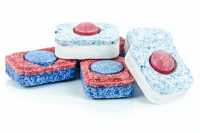Author Interviews, Cannabis, JAMA, Pediatrics / 07.01.2022
Cannabis Poisonings in Children Increase After Pot Legalized
MedicalResearch.com Interview with:
Daniel Myran, MD, MPH, CCFP, FRCPC
Family and Public Health and Preventive Medicine Physician
CIHR Fellow, Ottawa Hospital Research Institute
Department of Family Medicine Innovation Fellow
University of Ottawa
MedicalResearch.com: What is the background for this study?
Response: Canada legalized recreational, or non-medical, cannabis in October 2018. Canada took phased approach to legalization initially only allowing flower-based cannabis products and oils and after one year permitting the sale of commercial cannabis edibles (e.g. THC containing candies, baked goods, and drinks). In this study we took advantage of this phased roll out of legal cannabis to understand the impact of legalization on cannabis exposures or poisonings in children aged 0-9 years and the contribution of different types of cannabis products to these events.
(more…)




